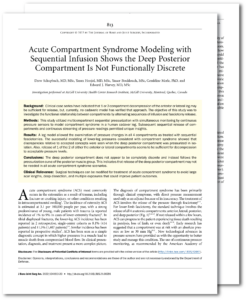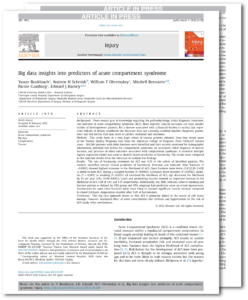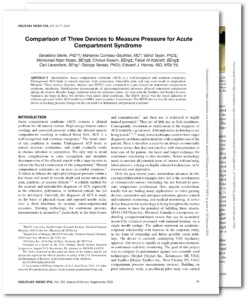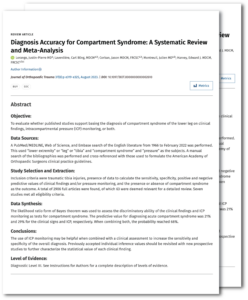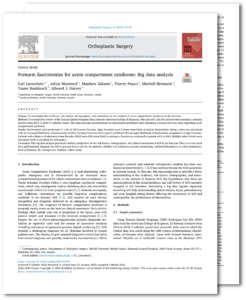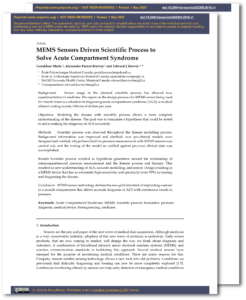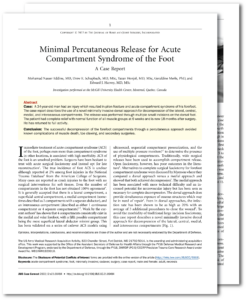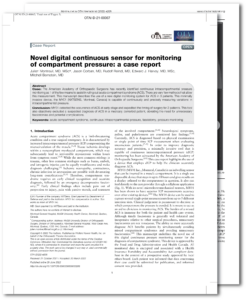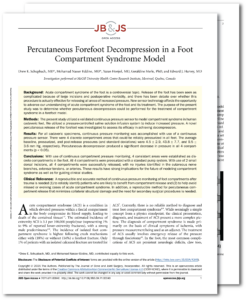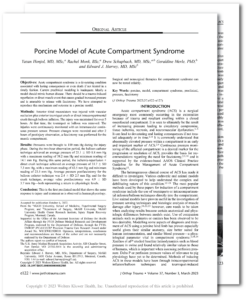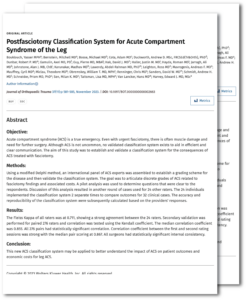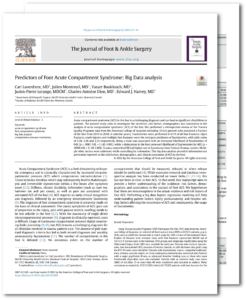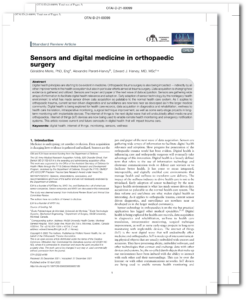https://journals.lww.com/jbjsjournal/abstract/2022/05040/acute_compartment_syndrome_modeling_with.8.aspx
Background: Clinical case series have indicated that 1 or 2-compartment decompression of the anterior or lateral leg may be sufficient for release, but, currently, no cadaveric model has verified that approach. The objective of this study was to investigate the functional relationship between compartments by alternating sequences of infusion and fasciotomy release.
Methods: This study utilized multicompartment sequential pressurization with simultaneous monitoring by continuous pressure sensors to model compartment syndrome in a human cadaver leg. Subsequent sequential release of compartments and continuous streaming of pressure readings permitted unique insights.
Results: A leg model allowed the examination of pressure changes in all 4 compartments as treated with sequential fasciotomies. The successful modeling of lower-leg pressures consistent with compartment syndrome showed that discrepancies relative to accepted concepts were seen when the deep posterior compartment was pressurized in isolation. Also, the release of 1 of the 2 of either the anterior or lateral compartments seems to be sufficient for decompression to acceptable pressure levels.
Conclusions: The deep posterior compartment does not appear to be completely discrete and instead follows the pressurization curve of the posterior muscle group. This indicates that release of the deep posterior compartment may not be needed in all acute compartment syndrome scenarios.
Clinical Relevance: Surgical techniques can be modified for treatment of acute compartment syndrome to avoid large scar lengths, deep dissection, and multiple exposures that could improve patient outcomes.
